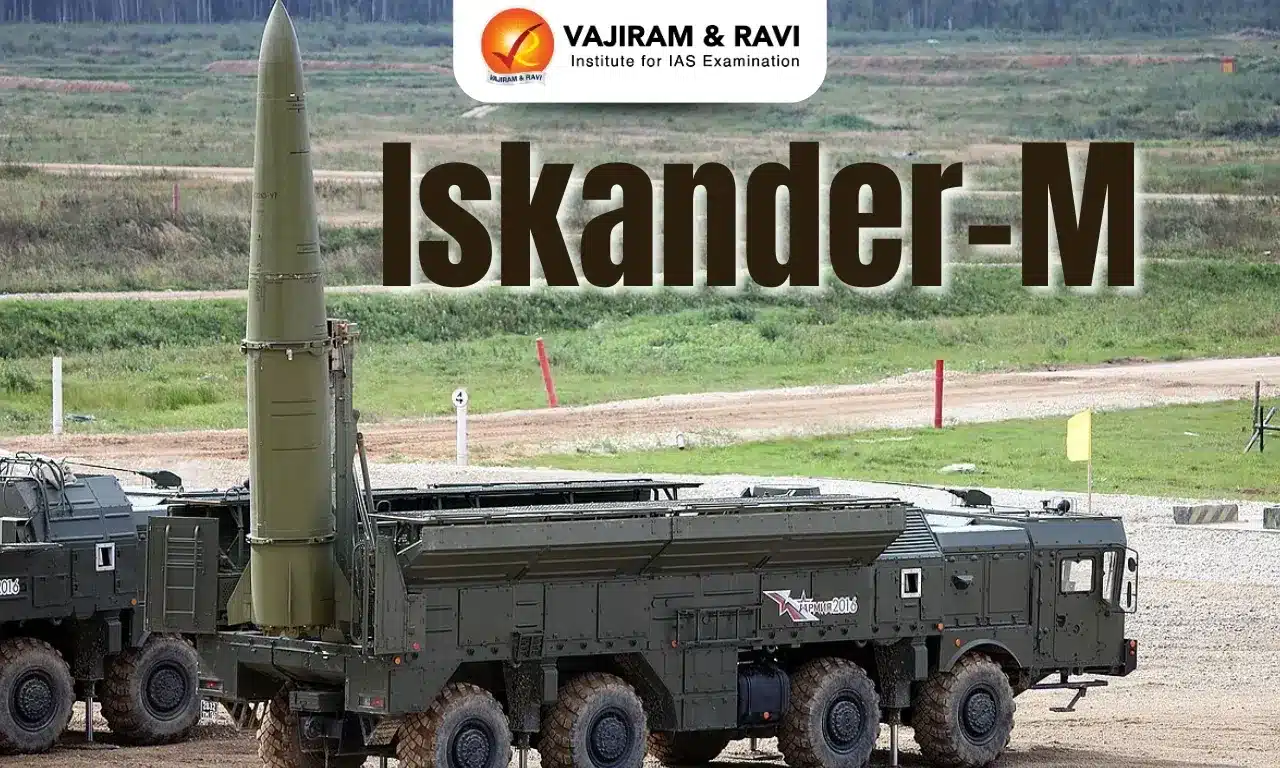About Iskander-M
- The Iskander (Western reporting name: SS-26 Stone) is a road-mobile short-range ballistic missile system developed by Russia.
- It entered Russian service in 2006. It was first used by the Russians in 2008 against Georgia.
- It is designed for tactical strikes on small, high-value land targets.
- This system can use different types of missiles.
Iskander-M Features
- It is 7.3 meters long, 0.92 meters in diameter, and has a launch weight of 3,750 kilograms.
- The missiles possess a maximum range of 500 km and carry payloads between 480 and 700 kg.
- It can carry conventional and nuclear warheads.
- Its missiles can travel at up to seven times the speed of sound (Mach 7) and can reach an altitude of more than 30 miles.
- It employs a maneuverable reentry vehicle (MaRV) and decoys to defeat theater missile defense systems.
- It is also equipped with various systems for in-flight correction and self-targeting, allowing the missile to overcome missile defense systems.
Iskander-M Variants
- Iskander-E: Export version, range: 280 km.
- Iskander-K: New version, unveiled in 2007, with a new cruise missile R-500, range: 280 km max.
Iskander-M FAQs
Q1. What is the range of the Iskander M missile?
Ans. The Iskander M missile has a range of 500 km.
Q2. What is a ballistic missile?
Ans. A ballistic missile is a rocket-propelled weapon that follows a high-arching, free-fall trajectory after launch, typically used to deliver warheads over long distances.
Q3. What is a maneuverable reentry vehicle (MaRV)?
Ans. A MaRV is a type of warhead designed to change its flight path during reentry into the Earth’s atmosphere, allowing it to evade missile defense systems.
Source: IND
Last updated on November, 2025
→ Check out the latest UPSC Syllabus 2026 here.
→ Join Vajiram & Ravi’s Interview Guidance Programme for expert help to crack your final UPSC stage.
→ UPSC Mains Result 2025 is now out.
→ UPSC Notification 2026 is scheduled to be released on January 14, 2026.
→ UPSC Calendar 2026 is released on 15th May, 2025.
→ The UPSC Vacancy 2025 were released 1129, out of which 979 were for UPSC CSE and remaining 150 are for UPSC IFoS.
→ UPSC Prelims 2026 will be conducted on 24th May, 2026 & UPSC Mains 2026 will be conducted on 21st August 2026.
→ The UPSC Selection Process is of 3 stages-Prelims, Mains and Interview.
→ UPSC Result 2024 is released with latest UPSC Marksheet 2024. Check Now!
→ UPSC Prelims Result 2025 is out now for the CSE held on 25 May 2025.
→ UPSC Toppers List 2024 is released now. Shakti Dubey is UPSC AIR 1 2024 Topper.
→ UPSC Prelims Question Paper 2025 and Unofficial Prelims Answer Key 2025 are available now.
→ UPSC Mains Question Paper 2025 is out for Essay, GS 1, 2, 3 & GS 4.
→ UPSC Mains Indian Language Question Paper 2025 is now out.
→ UPSC Mains Optional Question Paper 2025 is now out.
→ Also check Best IAS Coaching in Delhi

















